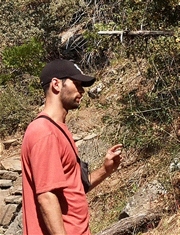Tutor HuntResources Physics Resources
Atomic Structure Facts
Check your knowledge of atomic structure with this quick quiz - answers at the end
Date : 22/06/2020
Author Information

Uploaded by : Joshua
Uploaded on : 22/06/2020
Subject : Physics
Questions
1) What is the radius of an atom?2) What are the three subatomic particles? 3) What does the mass number give? 4) What does the atomic number give?5) What is an isotope? 6) What is the plum pudding model? 7) What was the experiment that disproved the plum pudding model? 8) Who discovered the neutron?9) What is the activity of a radioactive isotope measured in?10) What is alpha, beta and gamma radiation made of?11) What type of radiation is the most penetrating?12) What type of radiation is the most ionising?13) What do we use to measure count rate?14) What happens to the mass number/atomic number during alpha decay?15) What happens to the mass number/atomic number during beta decay?16) What happens to the mass number/atomic number during gamma decay?17) What is the definition of half life? 18) What is contamination? 19) What is irradiation? 20) What is irradiation used for?21) What type of radiation is used for irradiation?22) What does ionising mean?23) Why is radiation dangerous? 24) What can we do to keep safe around radiation?Answers1) 1 10-10 m2) Protons and neutrons (inside the nucleus) and electrons orbiting around the nucleus. 3) The number of protons and neutrons.4) The number of protons5) Isotopes have the same number of protons but different numbers of neutrons. 6) An early model of the atom where the atom is a ball of positive charge with negative electrons embedded in it. 7) The gold foil experiment alpha particles were fired at gold foil. Plum pudding model predicted all would travel straight through but some were deflected and reflected straight back. 8) James Chadwick. 9) Becquerel (Bq).10) Alpha Helium nucleus (2 protons, 2 neutrons), Beta fast moving electron, Gamma EM wave 11) Gamma radiation.12) Alpha radiation.13) Geiger-muller tube. 14) Mass number goes down by 4, atomic number goes down by 2. 15) Mass number no change. Atomic number goes up by 1. 16) No change.17) The time taken for the count rate to halve/number of radioactive nuclei to halve. 18) When radioactive isotopes end up on other materials. 19) Irradiation is exposing an object to nuclear radiation. The irradiated object does not become radioactive.20) Sterilising food/medical equipment. 21) Gamma radiation. It can penetrate through packaging. 22) Removal of an electron from an atom. 23) Can mutate cells, lead to cancer/radiation sickness and even death. 24) Keep as far away as possible, spend as little time as possible near radioactive source, shield yourself with thick lead/concrete
This resource was uploaded by: Joshua
